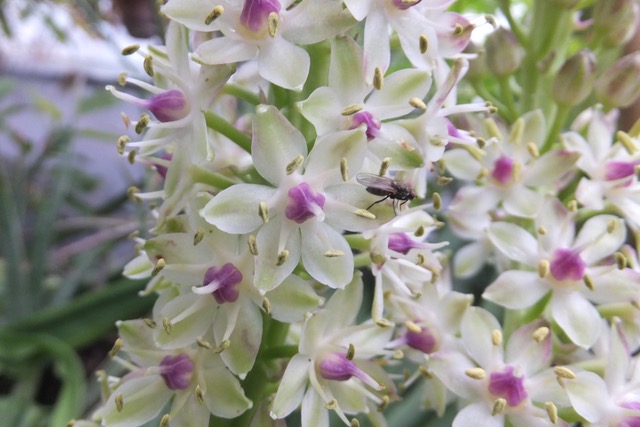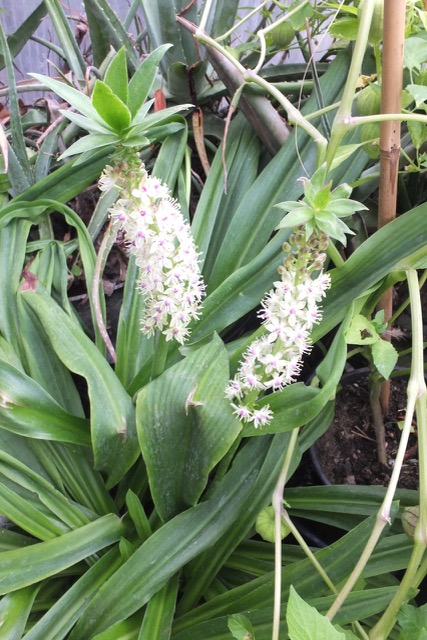
An excellent greenhouse subject Eucomis comosa has lush green foliage (spotted with purple markings underneath) from which emerge long lasting spires of pretty blooms that grace us for many weeks from mid-summer through till autumn. Not hardy enough for most to risk outdoors this attractive bulb is a close relative of our Hyacinths and Ornithogalum and though not as heavily perfumed still carries a delightful scent that will fill your greenhouse.

Eucomis species are mostly South African in origin and E. comosa comes from the hill lands of Natal making it the hardiest of a tender genus. The common name is only vaguely appropriate for Eucomis does not much resemble an actual pineapple flower, nor much resembles a pineapple, however gets the name for the same reason. Both of these were introduced in the same period and were so called as they both looked somewhat like pine cones, the nearest analogy of the time. (Pine cones were a popular motif often surmounting pew ends in churches or stood atop pillars, particularly by grand entrances.)
The bulbs are quite large and enjoy being buried six inches deep in rich moist compost in a large tub sat in a sunny position. Remarkably easy to look after this is a good banker and very rewarding as long lived with a display lasting months as well as attractive leaves.

Although as with most plants you might try to start this from seed better buy your first bulbs and take offsets when growth starts in spring to multiply up. This is especially true of the finer cultivars with differently coloured flowers and variegated leaves.
Water regularly from when the first new shoots appear in spring and add some rose type liquid feed weekly until growth slows in autumn. Once the leaves start to die down dry off and protect from any accidentally penetrating frost, say swathed in blankets under the staging, bringing the tubs out again in spring.
Other than cold and the pesky molluscs few problems beset Eucomis and surprisingly although a half dozen species were introduced in the Eighteenth century unlike so many tropical genera this one has kept expanding in popularity with now more than a dozen species in three dozen varieties currently available. More than enough choice subjects to fill the greenhouse of any connoisseur.










